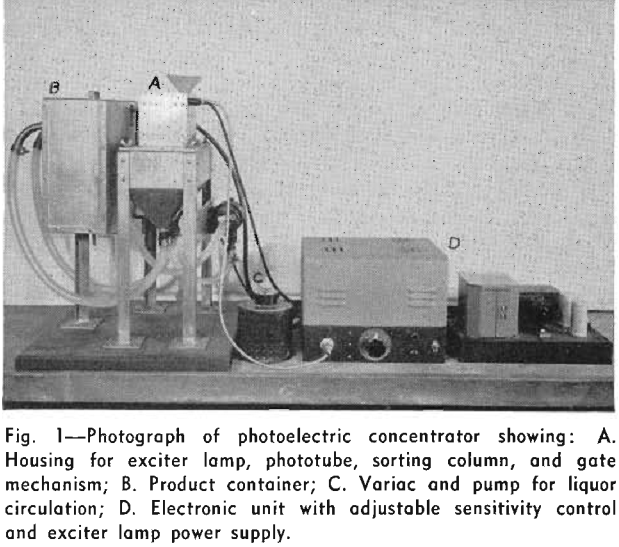
The crystal laboratory, Dept. of Physics, Massachusetts Institute of Technology, was confronted with the problem of obtaining a supply of optical grade calcium fluoride (CaF2) for use in growing synthetic CaF2 crystals. A search of the known fluorspar deposits did not indicate that any quantity of optical spar could be obtained. Even the best material had to be sorted by hand to remove impurities.
The mineral engineering section of the Dept. of Metallurgy undertook to investigate the possibility of concentrating clear optical fluorspar, —4 mesh + 10 mesh, from a feed containing over 99 pct CaF2. Various innovations of the known methods of concentration were considered, but in each case the minute amount of impurities associated with the crystal produced such extremely small differences
in physical properties of the particles as to eliminate the usual methods of mineral concentration.
Photoelectric concentration of fluorite is based on the fact that in a liquid having an index of refraction equal to that of fluorite (n = 1.434) clear crystals are invisible, whereas crystals containing occluded impurities absorb or scatter a part of the light. Thus if crystals pass through a horizontal light beam, the undesirable crystals give themselves away by changing the light received by a photoelectric receiver.
The first model, constructed of lucite, was essentially an exploratory machine and as such contained many gadgets, but it served its purpose in developing an electronic circuit, indicating necessary changes, and proving the approach feasible.
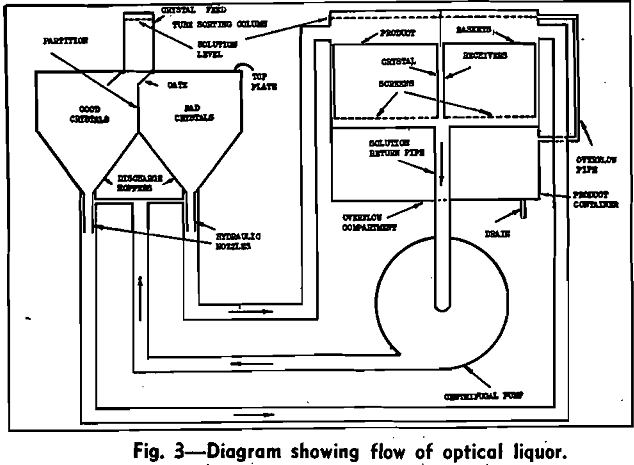 |
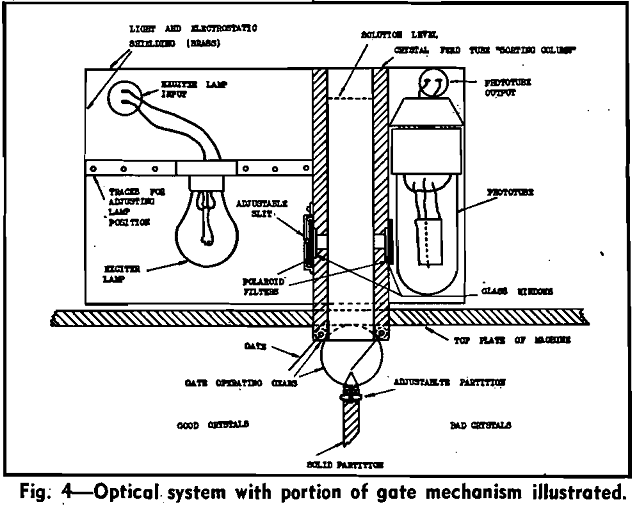 |
The sorting column is ¾ in. wide and square in cross section. Its length is about 5 in. It has been found advisable to use hoppers with discharge openings of several sizes, so that each opening permits the passage of some particular size of particles. In this way the particles can be centered through the sorting column and are sorted when in the same position with respect to the beam of light. To facilitate adjusting and cleaning of the concentrator, the sorting column and all mechanical parts are built into the removable top of the product compartments.
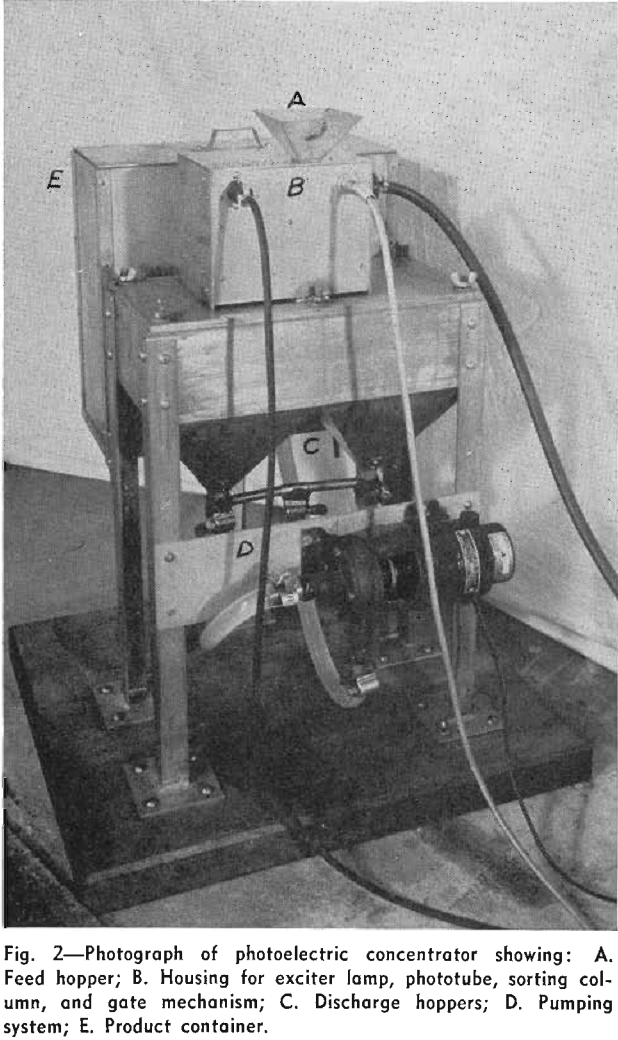 |
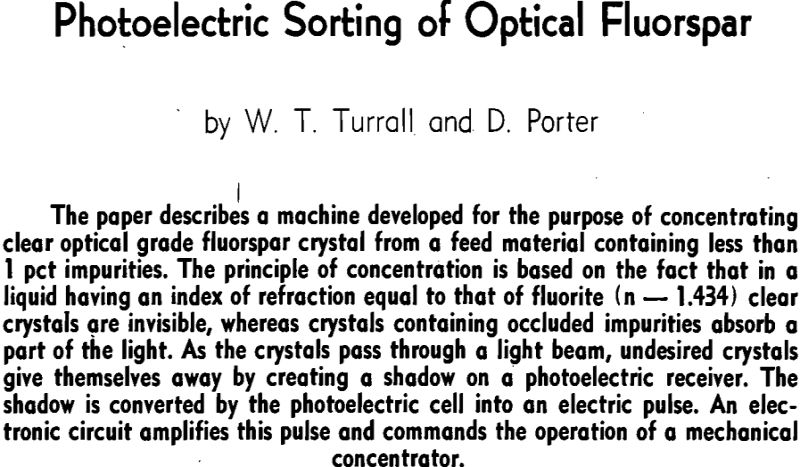 |
